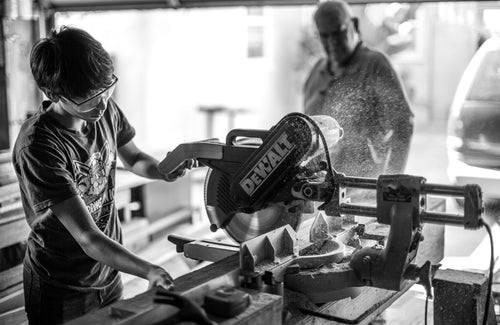What comes to mind when you think of a career in the skilled trades? Good salaries, stability and engaging work? Or poorly paid, unsafe jobs with no room for growth?
Surprisingly, the answer depends on who you ask. In this three-part series, we explore why students don’t typically consider the trades, why they definitely should and how we can help them do that.
Do you believe we should encourage students to explore the trades? If so, check out the Trades Cards.
Every year, thousands of students graduate from high school. More often than not, they’re groomed to enter post-secondary school to achieve academically and are often encouraged to look at the trades as a ‘fall-back’ option. As parents, teachers, and guides, are we holding our students back from reaching their full potential by assuming that academics will get them farther? Here are three reasons why young people should have equal opportunity to explore the skilled trades:
- The skilled trades are a great fit for many young people. More than you may think.

Photo by Angelina Litvin on Unsplash
There are many young people that love hands-on, practical work that leverages their curiosity and creativity. This may because they have an underlying ability that is utilized in this type of work. Do you know someone who fits this description? For example, they could have a natural ability related to visual perception, dexterity or spatial relations.
When students find work that aligns with their strengths and motivations, they are able to make their highest contribution. The sense of accomplishment one gets from this type of contribution is a powerful predictor of work satisfaction.
The skilled trades offer specific opportunities for practical work. Since some students enjoy and are skilled at this work, we need to encourage them to discover these opportunities.
- Skilled trades offer engaging learning experiences.

Photo by Vance Osterhout on Unsplash
Skilled trades education makes learning applicable through the apprenticeships that are offered. Apprenticeships are training systems which combine on-the-job training and accompanying study, often leading to a professional designation.
There are several benefits to this approach. First, “learning by doing” is one the most effective ways to learn and retain new information. Second, it gives students immediate experience in their fields. Third, the unique apprenticeships offered to the trades serve as a realistic job preview, which gives students insights into what the job is really like. These kinds of experiences allow students the opportunity to ‘try before they buy’ into a job and work culture that takes serious time and financial investment.
Other unique features of a skilled trades education become evident when compared to a traditional college education. When compared to college students, students in the skilled trades are more likely complete their training in fewer years, pay less tuition and are more likely to be paid during their studies.
- There is a tremendous need for skilled trades work.

Photo by Josue Isai Ramos Figueroa on Unsplash
There are many workplaces that need skilled trades workers. According to the U.S. Department of Education, those with career and technical educations are more likely to be employed than their counterparts with academic credentials. They are also significantly more likely to be working in their fields of study.
Not only are they more likely to be employed and working in their field, but skilled trades workers are also well-paid. For example, at California Steel Industries, a steel processing and finishing company, some supervisors without college degrees make as much as $120,000 per year, while electricians also can make six figures, according to company officials. And these aren’t the only well-paying jobs in the skilled trades; the United States has over 30 million jobs that pay an average of $55,000 per year and don’t require a bachelor’s degree, according to the Georgetown University Center on Education & the Workforce.
The opportunities in the trades are so numerous that many are predicting labour shortages. For example the U.S. Department of Education reports that there will be 68 percent more job openings in infrastructure-related fields in the next five years than there are people training to fill them. Another example is that almost 300,000 jobs for electricians will open up in the U.S. over the next decade.
To fill these gaps, governments are trying to encourage young people to consider the skilled trades. California is spending $6 million on a campaign to revive the reputation of vocational education, and $200 million to improve the delivery of it. The media has caught on to this need and has published dozens of articles over the past few years highlighting these opportunities.
How can we help youth explore the skilled trades?
A great place to start are the Trade Cards, a hands-on tool that sparks the exploration process through interactive activities. You can learn more about the Trade Cards here: https://mysparkpath.com/collections/all/products/single-trades-card-deck
What other reasons to explore the skilled trades would you add to our list?
Do you believe we should encourage students to explore the trades? If so, check out the Trades Cards.



